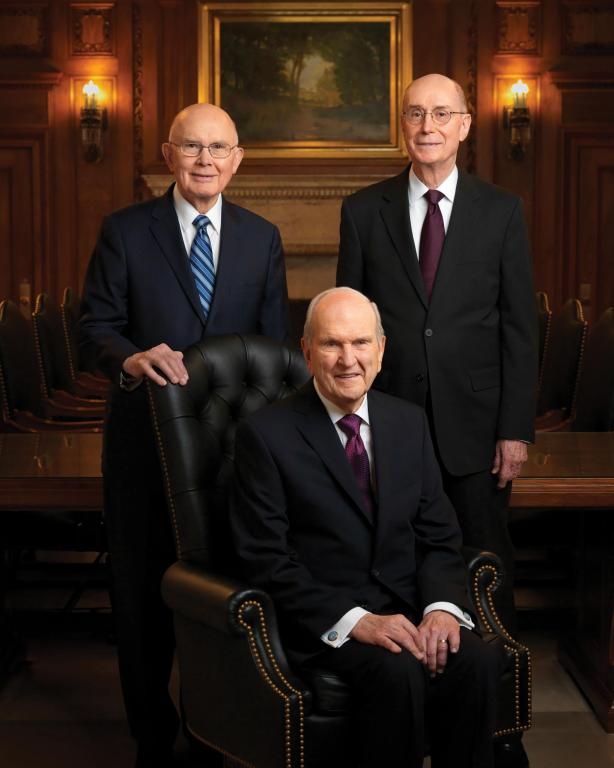
(Wikimedia Commons public domain photo)
I published the column below in the Provo Daily Herald around 29 April 1999:
“Among the existing heretical sects,” wrote the Catholic scholar Franz Agricola in 1582, “there is none which in appearance leads a more modest, better, or more pious life than the Anabaptists. As concerns their outward public life, they are irreproachable: no lying, deception, swearing, harsh language; no intemperate eating and drinking; no outward personal display is found among them, but humility, patience, uprightness, meekness, honesty, temperance, straightforwardness in such measure that one would suppose they have the Holy Spirit of God.”
Few communities have earned such praise.
The first “Anabaptists” appeared in Zurich, Switzerland, in 1525, under the title “Swiss Brethren.” That title, Greek for “re-baptizers,” derived from their requirement of adult baptism and a serious covenant to forsake sin. (This, indeed, was the reason for their separation from the great Zurich reformer Zwingli.) Later, they were called “Mennonites,” after a Dutch leader of the movement in the 1530s named “Menno Simons.” They began to produce martyrs almost instantly. These heroes are still celebrated in ballads and recalled in a huge collection of stories, the Bloody Theater or Martyrs Mirror, published in 1660.
Insisting on separation of church and state, Mennonites claimed that the leaders of the Reformation had not gone far enough to fix the problems of Christendom. Mennonites emphasize plain living, plain dress, and simple worship. They declare the Sermon on the Mount to be their creed. Most believe that the Bible forbids them to fight, swear oaths, sue one another, or hold public offices involving the use of force. They teach that Christ’s forgiveness of sins is inseparably connected with choosing to live rightly, even under suffering. Much less militant or confrontational than certain other forms of modern Protestantism, they feel called to quietly model the ways of peace. (The “Quakers,” or Society of Friends, came to the same conclusion a century later.) Today, they are noted for their care for the aged, orphans, the sick, and the poor, as well as for those injured in wars and natural disasters.
Although they rejected the hierarchical structure of the Catholic church — they still call one another “brother” and “sister” and avoid titles like “reverend” — Mennonites were actually closer on two vital points to Catholicism than to Martin Luther. First, they expected good works of believers, and did not see that as denying God’s grace. One early Swiss writer reported that the Mennonites stressed the importance of good works even more than the Catholics did. For this, they were accused again and again of trying to earn their way into heaven; they were labeled “work-saints” and “heaven-stormers.” Second, they believed strongly in missionary work, whereas, since Europe was already nominally Christian, Lutheran theologians de-emphasized the need for conversion. (Virtually every European had received infant baptism.) “The church,” one Mennonite writer says, “is the body of those who have been converted and have turned from sin to Christ, and in whom the Spirit of God dwells. The church is not officers, boards, committees, and other structures.” Accordingly, for Mennonites, no infant could be a member of the church, since no infant was capable of the conscious decision required for such membership.
But Mennonites stressed the importance of the church, of Christians banding together to live in community, believing that only thus could they approach the kind of life they were called to live. (Some, following John 13, even wash one another’s feet as an emblem of mutual service.)
Fiercely persecuted, the Dutch Mennonites moved to northern Germany and Prussia in the 1600s and then fled to the Ukraine in the following century. In 1874, they moved again to Canada and the American Midwest. The Swiss Mennonites settled in southern Germany and France, but accepted William Penn’s offer of religious liberty and moved to Pennsylvania in 1683. Decentralized church structure and enforced geographical dispersion, among other things, fractured the Mennonites into various groups, including the Amish and the so-called “Pennsylvania Dutch” (who take the notion of “plain living” to picturesque lengths that are not characteristic of most factions). There are, today, about 400,000 Mennonites, of whom roughly 320,000 live in North America. However, their service as missionaries and relief workers has begun to create a worldwide following.
Posted from Phoenix, Arizona












